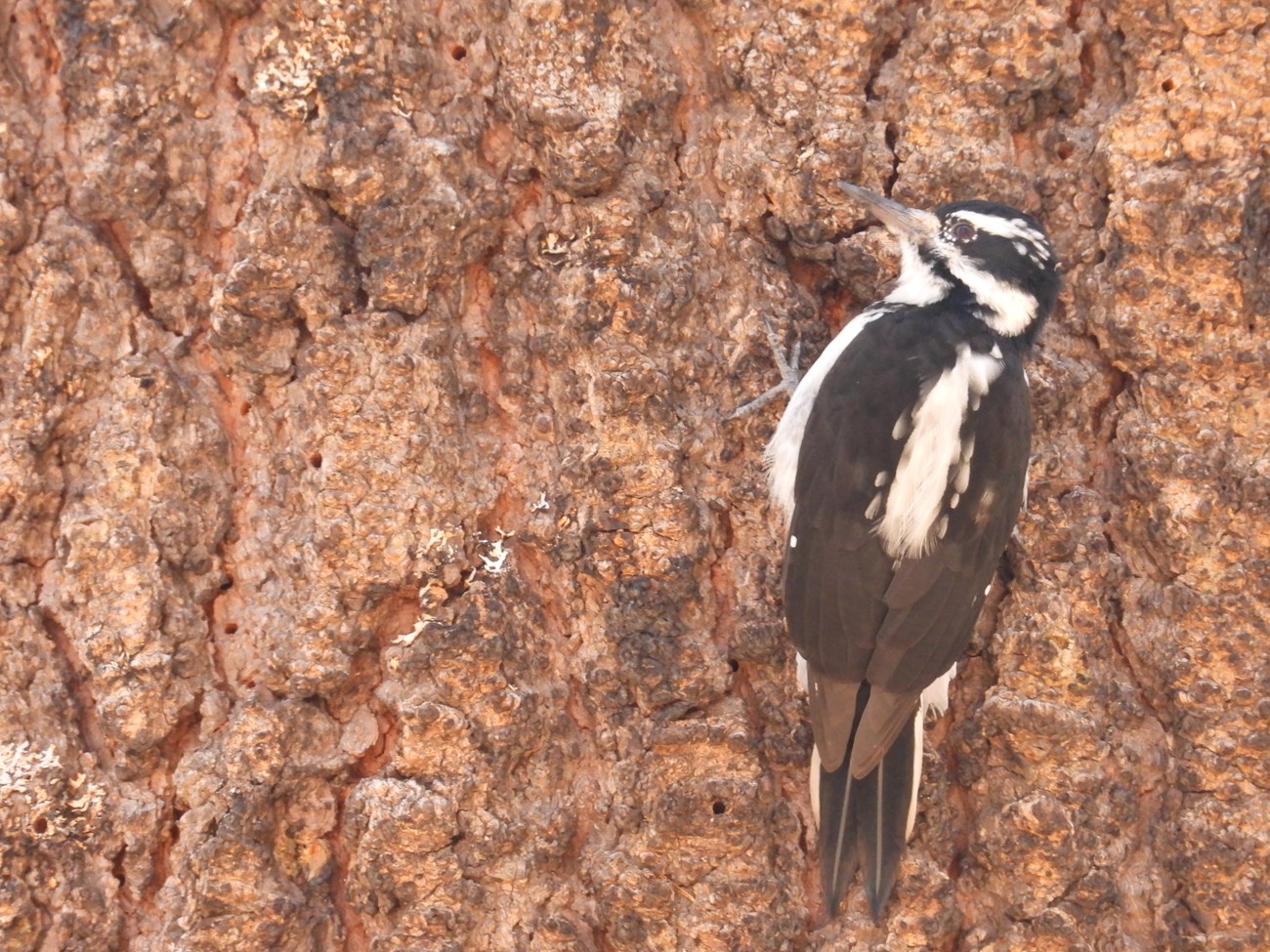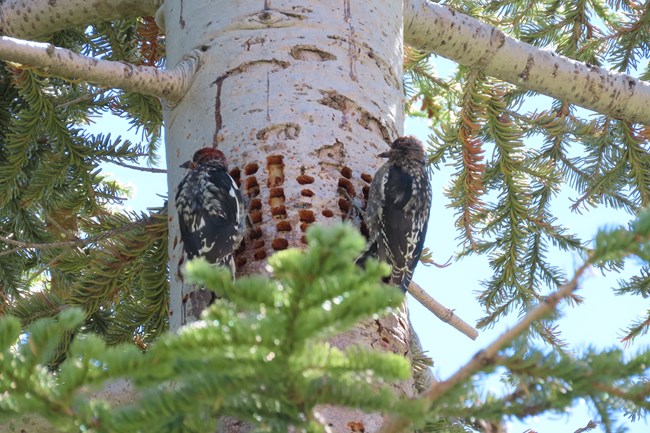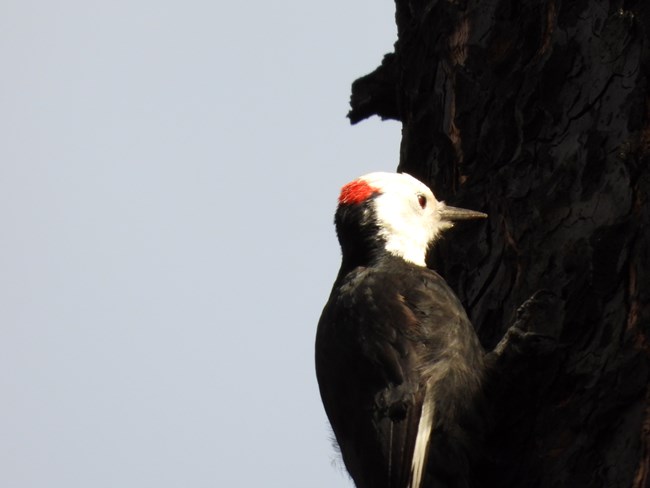
Paola Hinojosa 
Paola Hinojosa Depending on the species, the length of a woodpecker’s tongue can be up to a third of the bird’s total body length. The tongue of a woodpecker is so long it coils around the back of the bird’s skull. Tongue length and spongy bones support a woodpecker's brain against injury. While the basic anatomy is the same, woodpecker tongues vary among species. For instance, sapsuckers have brush-tipped tongues to lap tree sap into their mouths. Fun fact: In North America, the Northern Flicker has the longest tongue! All woodpeckers have a strong chisel-shaped bill for drilling into wood. There are variations in bill shape among woodpecker species depending on foraging behavior. The Red-breasted sapsucker creates rows of wells and feed on sap and insects attracted to the sap. The sap wells are also beneficial for hummingbirds migrating north ahead of spring plants flowering. Researchers have observed Rufous hummingbirds follow Red-breasted sapsuckers to sap wells. A woodpecker’s tail supports the bird’s weight at rest. The tail feathers curve and stiffen which flex when the tail presses against a tree. As a woodpecker climbs, the body leans in towards the trunk, while the legs push the body upwards. The bird then grips the tree with its feet as the body settles back to rest on the tail. 
Paola Hinojosa |
Last updated: January 26, 2024
